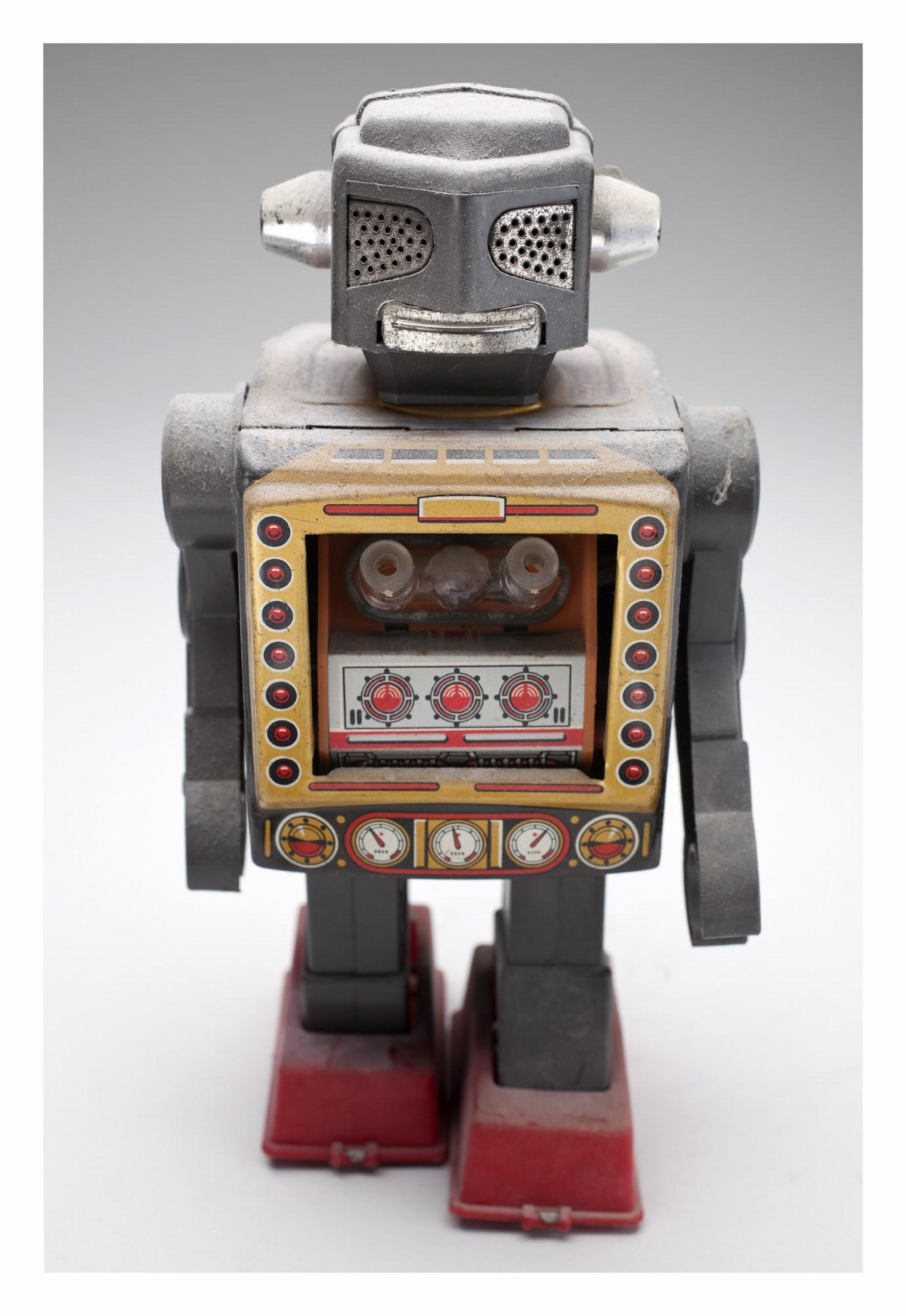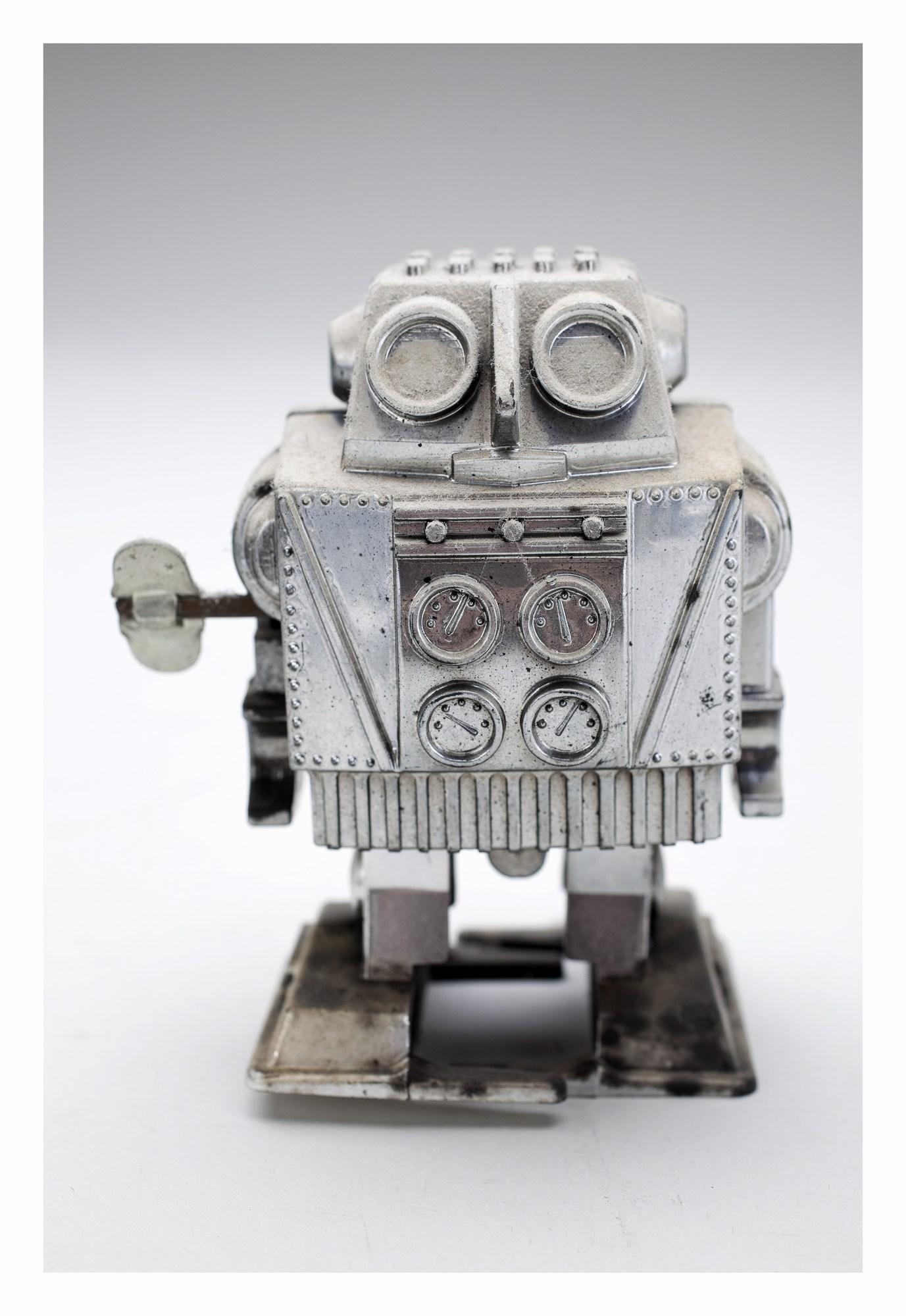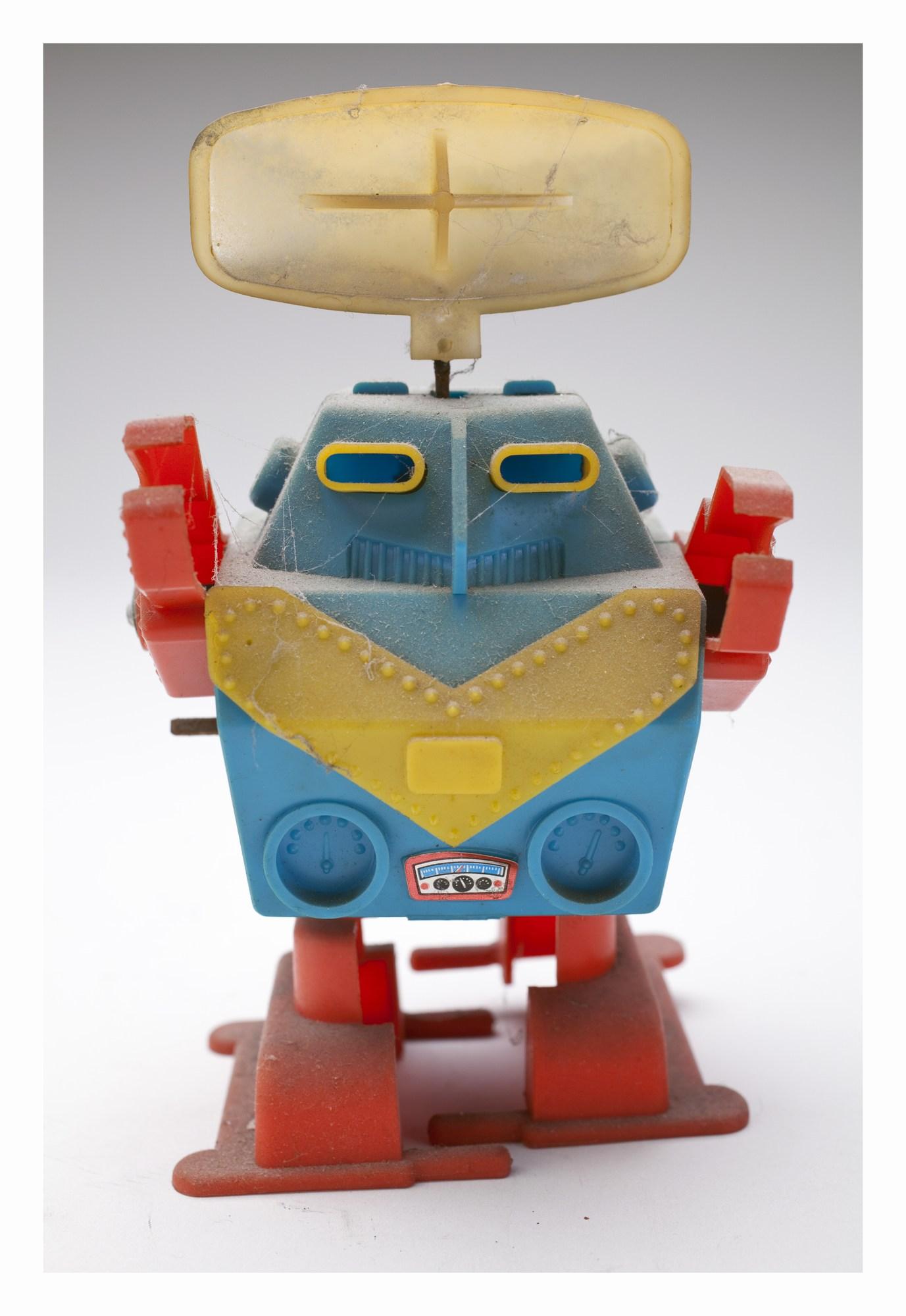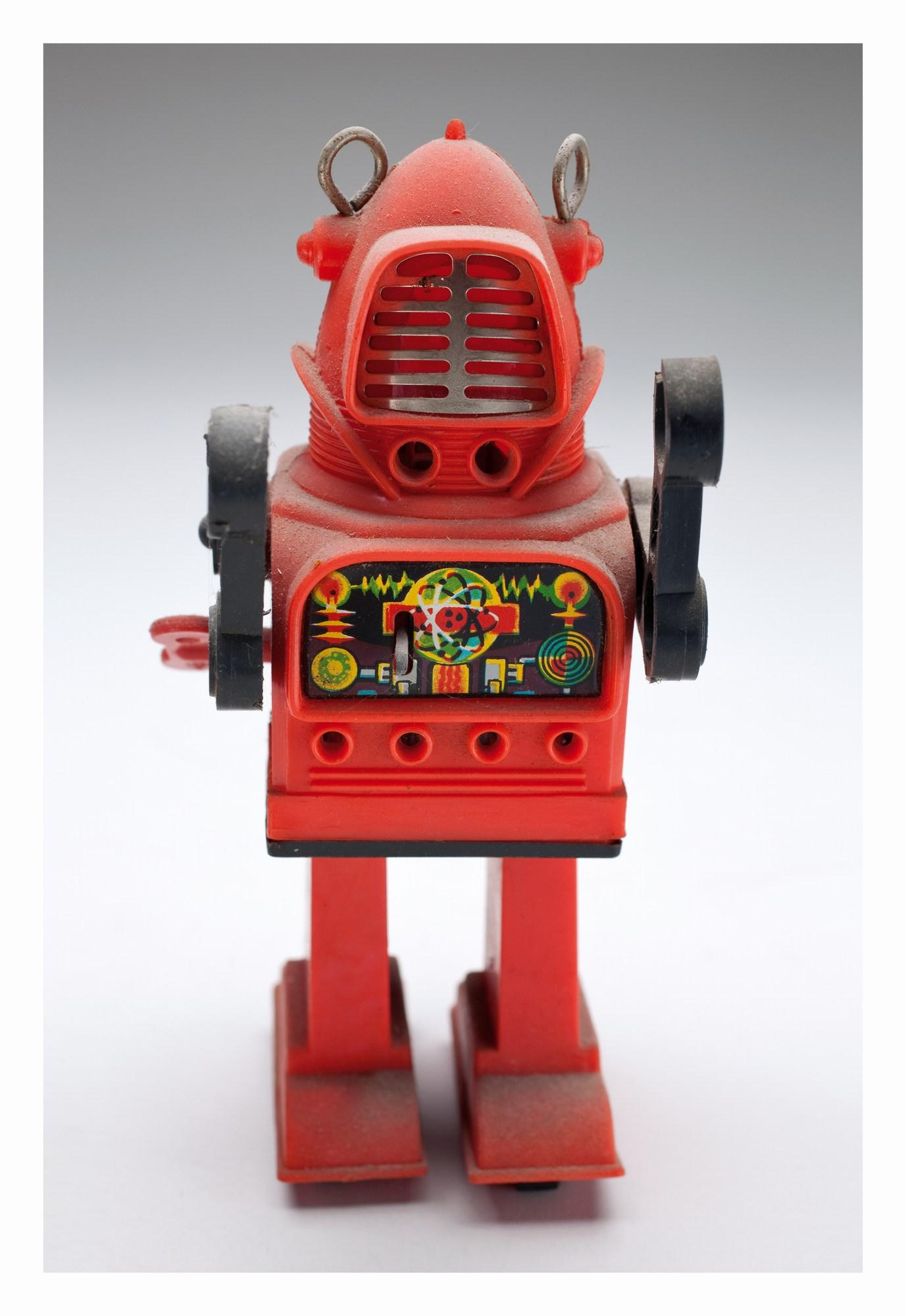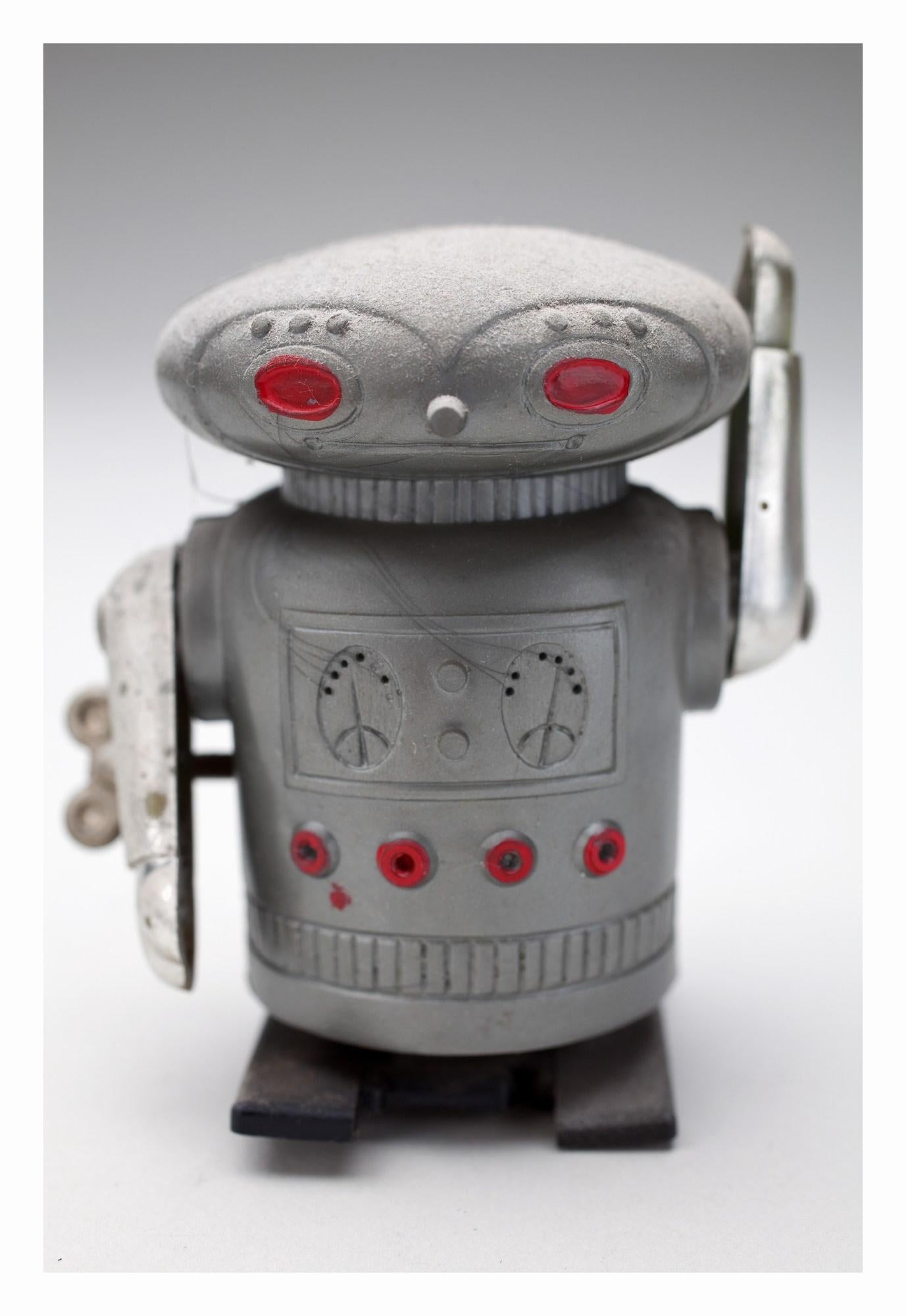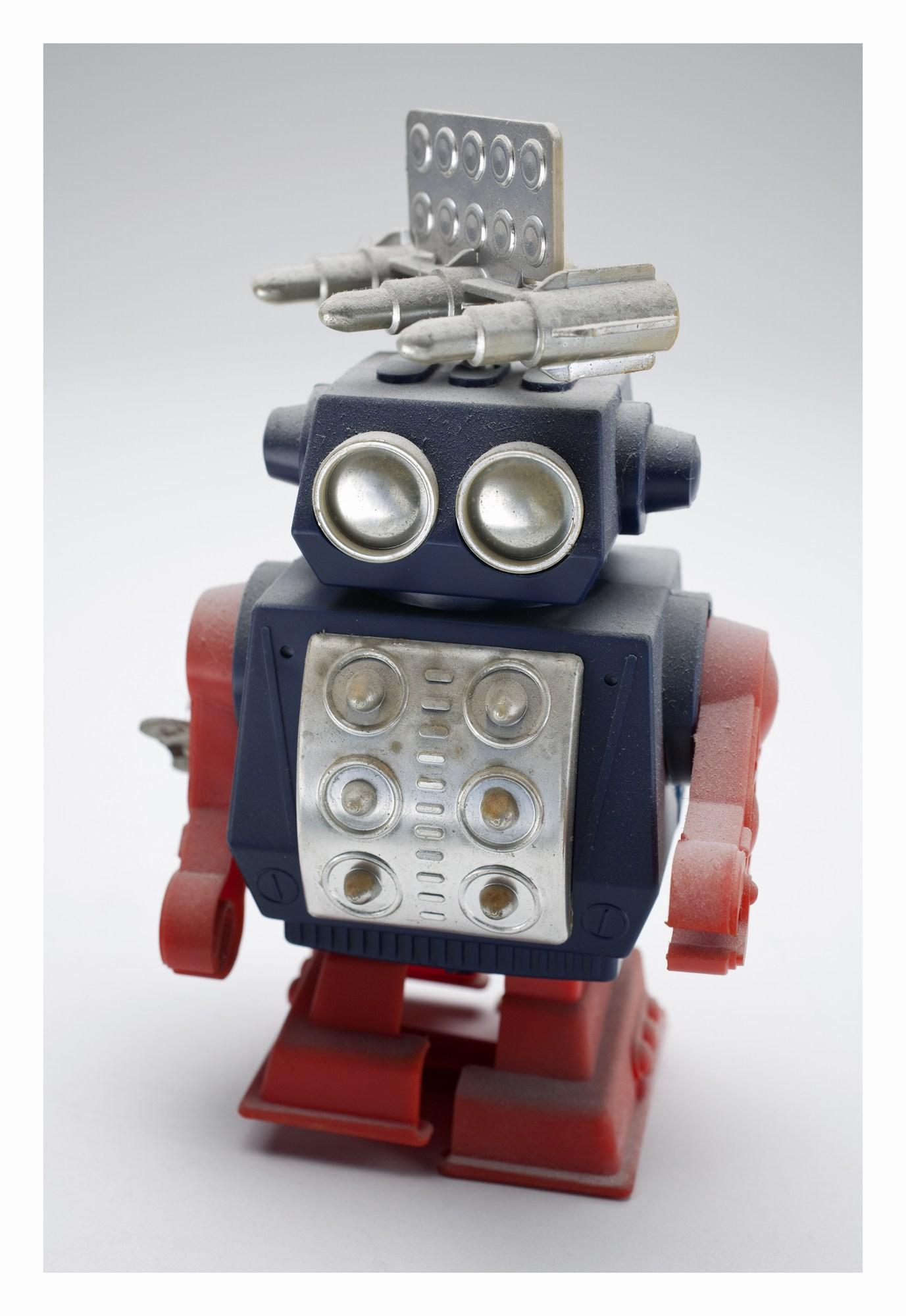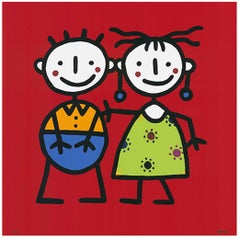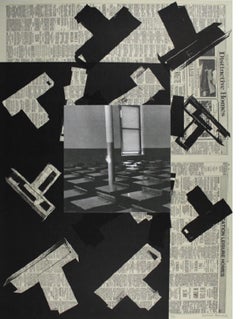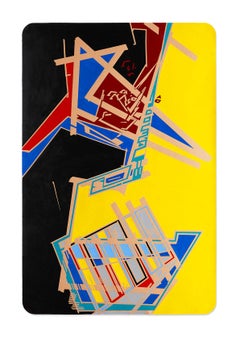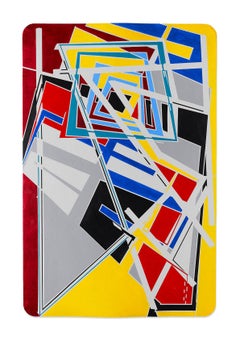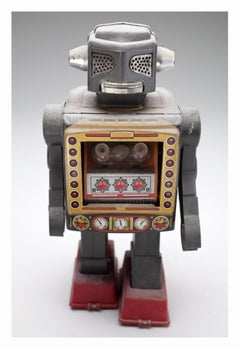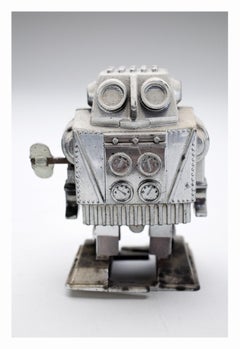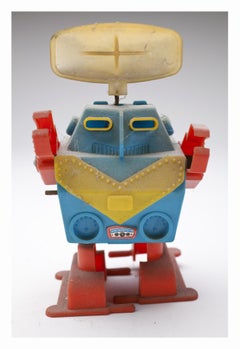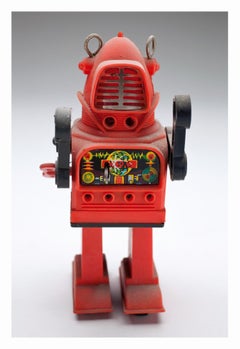Items Similar to Roboter
Want more images or videos?
Request additional images or videos from the seller
1 of 5
Franz BasderaRoboter2021
2021
$467.45
$584.3120% Off
£349.65
£437.0620% Off
€392
€49020% Off
CA$645.81
CA$807.2720% Off
A$704.19
A$880.2420% Off
CHF 373.71
CHF 467.1320% Off
MX$8,513.44
MX$10,641.8020% Off
NOK 4,729.53
NOK 5,911.9220% Off
SEK 4,335.28
SEK 5,419.0920% Off
DKK 2,986.39
DKK 3,732.9920% Off
About the Item
Giclée on Hahnemühle Velvet
2021
Hand signed and numbered
Edition: 20
- Creator:Franz Basdera (1948, Austrian)
- Creation Year:2021
- Dimensions:Height: 19.69 in (50 cm)Width: 24.02 in (61 cm)
- Medium:
- Period:
- Condition:
- Gallery Location:Winterswijk, NL
- Reference Number:Seller: KC017121stDibs: LU112429900472
About the Seller
4.9
Vetted Professional Seller
Every seller passes strict standards for authenticity and reliability
Established in 2014
1stDibs seller since 2019
243 sales on 1stDibs
Typical response time: 8 hours
- ShippingRetrieving quote...Shipping from: Winterswijk, Netherlands
- Return Policy
More From This Seller
View AllBoy And Girl
By Franz Basdera
Located in Winterswijk, NL
Playful graphic image depicting a boy and a girl made in bright vibrating colors. Figure of children on a red background with a confident black outline. Will fit both in the children...
Category
21st Century and Contemporary Paintings
Materials
Giclée
$467 Sale Price
20% Off
Galeria Joan Prats
Located in Winterswijk, NL
Screen print and collage
Hand-signed
Edition size: 99 - 1992
Category
1990s Prints and Multiples
Materials
Color, Screen
$281 Sale Price
20% Off
Print Edition after Centmayer - "014_1 Flood of Images"
Located in Winterswijk, NL
Print Edition after Centmayer - "014_1 Flood of Images".
Print edition from the Ukraine series Flood of Images 2022 on 315 g paper in museum quality.
Signed, limited edition of 30 p...
Category
21st Century and Contemporary Contemporary Prints and Multiples
Materials
Paper, Inkjet
$858 Sale Price
20% Off
Print Edition after Centmayer - "009_1 Flood of Images"
Located in Winterswijk, NL
Print Edition after Centmayer - "009_1 Flood of Images".
Print edition from the Ukraine series Flood of Images 2022 on 315 g paper in museum quality.
Signed, limited edition of 30 p...
Category
21st Century and Contemporary Contemporary Prints and Multiples
Materials
Paper, Inkjet
$858 Sale Price
20% Off
Abstract Painting - Pharaohs Magic by Wunderlich
Located in Winterswijk, NL
From a fabric of lines, surfaces, shapes and structures, balanced by matte and bright colors, the artist creates landscapes, fauna and flora, motifs of animate and inanimate nature. ...
Category
2010s Abstract Abstract Paintings
Materials
Canvas, Acrylic
Abstract Oilpainting on canvas for sale - unique by Frank Vaders
Located in Winterswijk, NL
This painting by Frank Vaders is a unique piece from the 1990s, made in oil on canvas with the dimensions 251 × 200 cm. It is in good condition. Vaders' works have been offered at au...
Category
1990s Abstract Abstract Paintings
Materials
Canvas, Oil
You May Also Like
Untitled (from ROBOTNICS Series)
By Christian Rothmann
Located in Kansas City, MO
Christian Rothmann
ROBOTNICS Series
C-Print
2019
Edition S (Edition of 10)
12 x 8.3 inches (30.5 x 21 cm)
Signed, dated and numbered verso
Other Edition Sizes available:
- Edition ...
Category
2010s Pop Art Photography
Materials
C Print
Untitled (from ROBOTNICS Series)
By Christian Rothmann
Located in Kansas City, MO
Christian Rothmann
ROBOTNICS Series
C-Print
2019
Edition S (Edition of 10)
12 x 8.3 inches (30.5 x 21 cm)
Signed, dated and numbered verso
Other Edition Sizes available:
- Edition M (Edition of 6) 35.4 x 23.6 inches (90 x 60 cm)
- Edition L (Edition of 6) 47.2 x 31.5 inches (120 x 80 cm)
- Edition XL (Edition of 3) 88.8 x 58.8 inches (225 x 150 cm)
PUR - Price Upon Request
--------------
Since 1979 Christian Rothmann had more than 40 solo and 80 group exhibitions worldwide.
Christian Rothmann had guest lectures, residencies, art fairs and biennials in Europe, Japan, USA, Australia and Korea.
Christian Rothmann (born 1954 in Kędzierzyn, Poland ) is a painter, photographer, and graphic artist.
In 1976 he first studied at the “Hochschule für Gestaltung” in Offenbach, Germany and moved to Berlin in 1977, where he graduated in 1983 at the “Hochschule der Künste”. From 1983 to 1995 he taught at the university as a lecturer and as an artist with a focus on screenprinting and American art history. To date, a versatile body of work has been created, which includes not only paintings but also long-standing photo projects, videos, and public art.
Guest lectures, teaching assignments, scholarships and exhibitions regularly lead Rothmann to travel home and abroad.
------------------------
Rothmann's Robots
These creatures date back to another era, and they connect the past and the future. They were found by Christian Rothmann, a Berlin artist, collector and traveler through time and the world: In shops in Germany and Japan, Israel and America, his keen eye picks out objects cast aside by previous generations, but which lend themselves to his own work. In a similar way, he came across a stash of historic toy robots of varied provenance collected by a Berlin gallery owner many years ago. Most of them were screwed and riveted together in the 1960s and 70s by Metal House, a Japanese company that still exists today. In systematically photographing these humanoids made of tin - and later plastic - Rothmann is paraphrasing the idea of appropriation art. Unknown names designed and made the toys, which some five decades on, Rothmann depicts and emblematizes in his extensive photo sequence.
In their photographs of Selim Varol's vast toy collection, his German colleagues Daniel and Geo Fuchs captured both the stereotypical and individual in plastic figures that imitate superheroes which were and still are generally manufactured somewhere in Asia. Christian Rothmann looks his robots deep in their artificially stylized, painted or corrugated eyes - or more aptly, their eye slits - and although each has a certain degree of individuality, the little figures remain unknown to us; they project nothing and are not alter egos. Rothmann trains his lens on their faces and expressions, and thus, his portraits are born. Up extremely close, dust, dents, and rust become visible. In other words, what we see is time-traces of time that has passed since the figures were made, or during their period in a Berlin attic, and - considering that he robots date back to Rothmann's childhood - time lived by the photographer and recipients of his pictures. But unlike dolls, these mechanical robots bear no reference to the ideal of beauty at the time of their manufacture, and their features are in no way modeled on a concrete child's face.
In this art project the robots appear as figures without a context, photographed face-on, cropped in front of a neutral background and reduced to their qualities of form. But beyond the reproduction and documentation a game with surfaces is going on; our view lingers on the outer skin of the object, or on the layer over it. The inside - which can be found beneath - is to an extent metaphysical, occurring inside the observer's mind. Only rarely is there anything to see behind the robot's helmet. When an occasional human face does peer out, it turns the figure into a robot-like protective casing for an astronaut of the future.
If we really stop and think about modern toys, let's say those produced from the mid 20th century, when Disney and Marvel films were already stimulating a massive appetite for merchandising, the question must be: do such fantasy and hybrid creatures belong, does something like artificial intelligence already belong to the broader community of humans and animals? It is already a decade or two since the wave of Tamagotchis washed in from Japan, moved children to feed and entertain their newly born electronic chicks in the way they would a real pet, or to run the risk of seeing them die. It was a new form of artificial life, but the relationship between people and machines becomes problematic when the machines or humanoid robots have excellent fine motor skills and artificial intelligence and sensitivity on a par with, or even greater than that of humans. Luckily we have not reached that point yet, even if Hollywood adaptations would have us believe we are not far away.
Rothmann's robots are initially sweet toys, and each toy is known to have a different effect on children and adults. They are conceived by (adult) designers as a means of translating or retelling history or reality through miniature animals, knights, and soldiers. In the case of monsters, mythical creatures, and robots, it is more about creating visions of the future and parallel worlds. Certainly, since the success of fantasy books and films such as Lord of the Rings or The Hobbit, we see the potential for vast enthusiasm for such parallel worlds. Successful computer and online games such as World
of Warcraft...
Category
2010s Pop Art Photography
Materials
C Print
Untitled (from ROBOTNICS Series)
By Christian Rothmann
Located in Kansas City, MO
Christian Rothmann
ROBOTNICS Series
C-Print
2019
Edition S (Edition of 10)
12 x 8.3 inches (30.5 x 21 cm)
Signed, dated and numbered verso
Other Edition Sizes available:
- Edition M (Edition of 6) 35.4 x 23.6 inches (90 x 60 cm)
- Edition L (Edition of 6) 47.2 x 31.5 inches (120 x 80 cm)
- Edition XL (Edition of 3) 88.8 x 58.8 inches (225 x 150 cm)
PUR - Price Upon Request
--------------
Since 1979 Christian Rothmann had more than 40 solo and 80 group exhibitions worldwide.
Christian Rothmann had guest lectures, residencies, art fairs and biennials in Europe, Japan, USA, Australia and Korea.
Christian Rothmann (born 1954 in Kędzierzyn, Poland ) is a painter, photographer, and graphic artist.
In 1976 he first studied at the “Hochschule für Gestaltung” in Offenbach, Germany and moved to Berlin in 1977, where he graduated in 1983 at the “Hochschule der Künste”. From 1983 to 1995 he taught at the university as a lecturer and as an artist with a focus on screenprinting and American art history. To date, a versatile body of work has been created, which includes not only paintings but also long-standing photo projects, videos, and public art.
Guest lectures, teaching assignments, scholarships and exhibitions regularly lead Rothmann to travel home and abroad.
------------------------
Rothmann's Robots
These creatures date back to another era, and they connect the past and the future. They were found by Christian Rothmann, a Berlin artist, collector and traveler through time and the world: In shops in Germany and Japan, Israel and America, his keen eye picks out objects cast aside by previous generations, but which lend themselves to his own work. In a similar way, he came across a stash of historic toy robots of varied provenance collected by a Berlin gallery owner many years ago. Most of them were screwed and riveted together in the 1960s and 70s by Metal House, a Japanese company that still exists today. In systematically photographing these humanoids made of tin - and later plastic - Rothmann is paraphrasing the idea of appropriation art. Unknown names designed and made the toys, which some five decades on, Rothmann depicts and emblematizes in his extensive photo sequence.
In their photographs of Selim Varol's vast toy collection, his German colleagues Daniel and Geo Fuchs captured both the stereotypical and individual in plastic figures that imitate superheroes which were and still are generally manufactured somewhere in Asia. Christian Rothmann looks his robots deep in their artificially stylized, painted or corrugated eyes - or more aptly, their eye slits - and although each has a certain degree of individuality, the little figures remain unknown to us; they project nothing and are not alter egos. Rothmann trains his lens on their faces and expressions, and thus, his portraits are born. Up extremely close, dust, dents, and rust become visible. In other words, what we see is time-traces of time that has passed since the figures were made, or during their period in a Berlin attic, and - considering that he robots date back to Rothmann's childhood - time lived by the photographer and recipients of his pictures. But unlike dolls, these mechanical robots bear no reference to the ideal of beauty at the time of their manufacture, and their features are in no way modeled on a concrete child's face.
In this art project the robots appear as figures without a context, photographed face-on, cropped in front of a neutral background and reduced to their qualities of form. But beyond the reproduction and documentation a game with surfaces is going on; our view lingers on the outer skin of the object, or on the layer over it. The inside - which can be found beneath - is to an extent metaphysical, occurring inside the observer's mind. Only rarely is there anything to see behind the robot's helmet. When an occasional human face does peer out, it turns the figure into a robot-like protective casing for an astronaut of the future.
If we really stop and think about modern toys, let's say those produced from the mid 20th century, when Disney and Marvel films were already stimulating a massive appetite for merchandising, the question must be: do such fantasy and hybrid creatures belong, does something like artificial intelligence already belong to the broader community of humans and animals? It is already a decade or two since the wave of Tamagotchis washed in from Japan, moved children to feed and entertain their newly born electronic chicks in the way they would a real pet, or to run the risk of seeing them die. It was a new form of artificial life, but the relationship between people and machines becomes problematic when the machines or humanoid robots have excellent fine motor skills and artificial intelligence and sensitivity on a par with, or even greater than that of humans. Luckily we have not reached that point yet, even if Hollywood adaptations would have us believe we are not far away.
Rothmann's robots are initially sweet toys, and each toy is known to have a different effect on children and adults. They are conceived by (adult) designers as a means of translating or retelling history or reality through miniature animals, knights, and soldiers. In the case of monsters, mythical creatures, and robots, it is more about creating visions of the future and parallel worlds. Certainly, since the success of fantasy books and films such as Lord of the Rings or The Hobbit, we see the potential for vast enthusiasm for such parallel worlds. Successful computer and online games such as World
of Warcraft...
Category
2010s Pop Art Photography
Materials
C Print
Untitled (from ROBOTNICS Series)
By Christian Rothmann
Located in Kansas City, MO
Christian Rothmann
ROBOTNICS Series
C-Print
2019
Edition S (Edition of 10)
12 x 8.3 inches (30.5 x 21 cm)
Signed, dated and numbered verso
Other Edition Sizes available:
- Edition ...
Category
2010s Modern Photography
Materials
C Print
Untitled (from ROBOTNICS Series)
By Christian Rothmann
Located in Kansas City, MO
Christian Rothmann
ROBOTNICS Series
C-Print
2019
Edition S (Edition of 10)
12 x 8.3 inches (30.5 x 21 cm)
Signed, dated and numbered verso
Other Edition Sizes available:
- Edition M (Edition of 6) 35.4 x 23.6 inches (90 x 60 cm)
- Edition L (Edition of 6) 47.2 x 31.5 inches (120 x 80 cm)
- Edition XL (Edition of 3) 88.8 x 58.8 inches (225 x 150 cm)
PUR - Price Upon Request
--------------
Since 1979 Christian Rothmann had more than 40 solo and 80 group exhibitions worldwide.
Christian Rothmann had guest lectures, residencies, art fairs and biennials in Europe, Japan, USA, Australia and Korea.
Christian Rothmann (born 1954 in Kędzierzyn, Poland ) is a painter, photographer, and graphic artist.
In 1976 he first studied at the “Hochschule für Gestaltung” in Offenbach, Germany and moved to Berlin in 1977, where he graduated in 1983 at the “Hochschule der Künste”. From 1983 to 1995 he taught at the university as a lecturer and as an artist with a focus on screenprinting and American art history. To date, a versatile body of work has been created, which includes not only paintings but also long-standing photo projects, videos, and public art.
Guest lectures, teaching assignments, scholarships and exhibitions regularly lead Rothmann to travel home and abroad.
------------------------
Rothmann's Robots
These creatures date back to another era, and they connect the past and the future. They were found by Christian Rothmann, a Berlin artist, collector and traveler through time and the world: In shops in Germany and Japan, Israel and America, his keen eye picks out objects cast aside by previous generations, but which lend themselves to his own work. In a similar way, he came across a stash of historic toy robots of varied provenance collected by a Berlin gallery owner many years ago. Most of them were screwed and riveted together in the 1960s and 70s by Metal House, a Japanese company that still exists today. In systematically photographing these humanoids made of tin - and later plastic - Rothmann is paraphrasing the idea of appropriation art. Unknown names designed and made the toys, which some five decades on, Rothmann depicts and emblematizes in his extensive photo sequence.
In their photographs of Selim Varol's vast toy collection, his German colleagues Daniel and Geo Fuchs captured both the stereotypical and individual in plastic figures that imitate superheroes which were and still are generally manufactured somewhere in Asia. Christian Rothmann looks his robots deep in their artificially stylized, painted or corrugated eyes - or more aptly, their eye slits - and although each has a certain degree of individuality, the little figures remain unknown to us; they project nothing and are not alter egos. Rothmann trains his lens on their faces and expressions, and thus, his portraits are born. Up extremely close, dust, dents, and rust become visible. In other words, what we see is time-traces of time that has passed since the figures were made, or during their period in a Berlin attic, and - considering that he robots date back to Rothmann's childhood - time lived by the photographer and recipients of his pictures. But unlike dolls, these mechanical robots bear no reference to the ideal of beauty at the time of their manufacture, and their features are in no way modeled on a concrete child's face.
In this art project the robots appear as figures without a context, photographed face-on, cropped in front of a neutral background and reduced to their qualities of form. But beyond the reproduction and documentation a game with surfaces is going on; our view lingers on the outer skin of the object, or on the layer over it. The inside - which can be found beneath - is to an extent metaphysical, occurring inside the observer's mind. Only rarely is there anything to see behind the robot's helmet. When an occasional human face does peer out, it turns the figure into a robot-like protective casing for an astronaut of the future.
If we really stop and think about modern toys, let's say those produced from the mid 20th century, when Disney and Marvel films were already stimulating a massive appetite for merchandising, the question must be: do such fantasy and hybrid creatures belong, does something like artificial intelligence already belong to the broader community of humans and animals? It is already a decade or two since the wave of Tamagotchis washed in from Japan, moved children to feed and entertain their newly born electronic chicks in the way they would a real pet, or to run the risk of seeing them die. It was a new form of artificial life, but the relationship between people and machines becomes problematic when the machines or humanoid robots have excellent fine motor skills and artificial intelligence and sensitivity on a par with, or even greater than that of humans. Luckily we have not reached that point yet, even if Hollywood adaptations would have us believe we are not far away.
Rothmann's robots are initially sweet toys, and each toy is known to have a different effect on children and adults. They are conceived by (adult) designers as a means of translating or retelling history or reality through miniature animals, knights, and soldiers. In the case of monsters, mythical creatures, and robots, it is more about creating visions of the future and parallel worlds. Certainly, since the success of fantasy books and films such as Lord of the Rings or The Hobbit, we see the potential for vast enthusiasm for such parallel worlds. Successful computer and online games such as World
of Warcraft, or the creation of avatars are also interesting worldwide phenomena of virtual realities that are not only relevant for children and teens.
So when a middle-aged Berlin photographic artist (like Christian Rothmann) chooses to study 120 toy robots with great difference in form, it represents a journey back to his own childhood - even if at the time, he played with a steam engine rather than a robot. Once batteries had been inserted, some of the largely male or gender-neutral robots, could flash, shoot, turn around and even do more complicated things. Some can even still do it today - albeit clumsily. This, of course, can only be seen on film, but the artist intends to document that as well; to feature the robots in filmic works of art.
The positioning of the figures in the studio is the same as the tableau of pictures in the exhibition room. In this way, one could say Rothmann deploys one robot after the other. This systematic approach enables a comparative view; the extreme enlargement of what are actually small and manageable figures is like the macro vision of insects whose fascinating, sometimes monster-like appearance only becomes visible when they are blown up a hundredfold. The same thing goes for the robots; in miniature form, they seem harmless and cute, but if they were larger than humans and made noises to match, they would seem more threatening.
Some of the tin figures...
Category
2010s Modern Photography
Materials
C Print
Untitled (from ROBOTNICS Series)
By Christian Rothmann
Located in Kansas City, MO
Christian Rothmann
ROBOTNICS Series
C-Print
2019
Edition S (Edition of 10)
12 x 8.3 inches (30.5 x 21 cm)
Signed, dated and numbered verso
Other Edition Sizes available:
- Edition M (Edition of 6) 35.4 x 23.6 inches (90 x 60 cm)
- Edition L (Edition of 6) 47.2 x 31.5 inches (120 x 80 cm)
- Edition XL (Edition of 3) 88.8 x 58.8 inches (225 x 150 cm)
PUR - Price Upon Request
--------------
Since 1979 Christian Rothmann had more than 40 solo and 80 group exhibitions worldwide.
Christian Rothmann had guest lectures, residencies, art fairs and biennials in Europe, Japan, USA, Australia and Korea.
Christian Rothmann (born 1954 in Kędzierzyn, Poland ) is a painter, photographer, and graphic artist.
In 1976 he first studied at the “Hochschule für Gestaltung” in Offenbach, Germany and moved to Berlin in 1977, where he graduated in 1983 at the “Hochschule der Künste”. From 1983 to 1995 he taught at the university as a lecturer and as an artist with a focus on screenprinting and American art history. To date, a versatile body of work has been created, which includes not only paintings but also long-standing photo projects, videos, and public art.
Guest lectures, teaching assignments, scholarships and exhibitions regularly lead Rothmann to travel home and abroad.
------------------------
Rothmann's Robots
These creatures date back to another era, and they connect the past and the future. They were found by Christian Rothmann, a Berlin artist, collector and traveler through time and the world: In shops in Germany and Japan, Israel and America, his keen eye picks out objects cast aside by previous generations, but which lend themselves to his own work. In a similar way, he came across a stash of historic toy robots of varied provenance collected by a Berlin gallery owner many years ago. Most of them were screwed and riveted together in the 1960s and 70s by Metal House, a Japanese company that still exists today. In systematically photographing these humanoids made of tin - and later plastic - Rothmann is paraphrasing the idea of appropriation art. Unknown names designed and made the toys, which some five decades on, Rothmann depicts and emblematizes in his extensive photo sequence.
In their photographs of Selim Varol's vast toy collection, his German colleagues Daniel and Geo Fuchs captured both the stereotypical and individual in plastic figures that imitate superheroes which were and still are generally manufactured somewhere in Asia. Christian Rothmann looks his robots deep in their artificially stylized, painted or corrugated eyes - or more aptly, their eye slits - and although each has a certain degree of individuality, the little figures remain unknown to us; they project nothing and are not alter egos. Rothmann trains his lens on their faces and expressions, and thus, his portraits are born. Up extremely close, dust, dents, and rust become visible. In other words, what we see is time-traces of time that has passed since the figures were made, or during their period in a Berlin attic, and - considering that he robots date back to Rothmann's childhood - time lived by the photographer and recipients of his pictures. But unlike dolls, these mechanical robots bear no reference to the ideal of beauty at the time of their manufacture, and their features are in no way modeled on a concrete child's face.
In this art project the robots appear as figures without a context, photographed face-on, cropped in front of a neutral background and reduced to their qualities of form. But beyond the reproduction and documentation a game with surfaces is going on; our view lingers on the outer skin of the object, or on the layer over it. The inside - which can be found beneath - is to an extent metaphysical, occurring inside the observer's mind. Only rarely is there anything to see behind the robot's helmet. When an occasional human face does peer out, it turns the figure into a robot-like protective casing for an astronaut of the future.
If we really stop and think about modern toys, let's say those produced from the mid 20th century, when Disney and Marvel films were already stimulating a massive appetite for merchandising, the question must be: do such fantasy and hybrid creatures belong, does something like artificial intelligence already belong to the broader community of humans and animals? It is already a decade or two since the wave of Tamagotchis washed in from Japan, moved children to feed and entertain their newly born electronic chicks in the way they would a real pet, or to run the risk of seeing them die. It was a new form of artificial life, but the relationship between people and machines becomes problematic when the machines or humanoid robots have excellent fine motor skills and artificial intelligence and sensitivity on a par with, or even greater than that of humans. Luckily we have not reached that point yet, even if Hollywood adaptations would have us believe we are not far away.
Rothmann's robots are initially sweet toys, and each toy is known to have a different effect on children and adults. They are conceived by (adult) designers as a means of translating or retelling history or reality through miniature animals, knights, and soldiers. In the case of monsters, mythical creatures, and robots, it is more about creating visions of the future and parallel worlds. Certainly, since the success of fantasy books and films such as Lord of the Rings or The Hobbit, we see the potential for vast enthusiasm for such parallel worlds. Successful computer and online games such as World
of Warcraft...
Category
2010s Modern Photography
Materials
C Print
More Ways To Browse
Robot Art
Painting Robot
Don Artist
Maritime Paintings
Melting Pot
Vintage Family Painting
Circus Painting
Oil Painting Children In Garden
20th Century Oil Paintings China
Paintings By Pissarro
Portrait Of Family
Vintage Street Scene Oil Paintings
Antique Marine Paintings
Mid Century Beach Scene Painting
Painting Bouquet Flowers
Thomas Benton Hart
Used Bennington
Abstract Cityscape Painting
